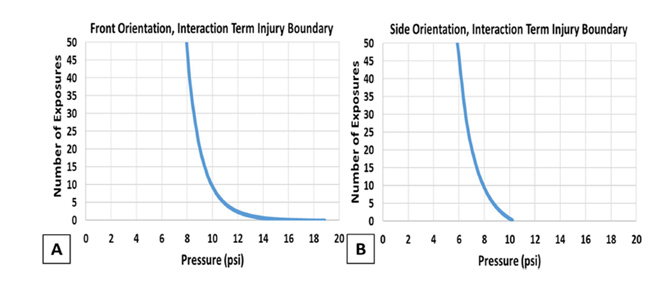Service members exposed to blast may experience devastating health consequences, including organ injury and long-term disabilities. Blast exposures can result from a single sudden event such as contact with an improvised explosive device, or more subtly over time through repeated blast overpressure (BOP) exposures associated with heavy weapon systems or breaching operations in training. At present, the military does not have set guidelines for exposure limits to repeated blasts for Service members. While several past and current studies investigate the impact of blast exposure on the brain, the extent of research on blast-induced lung damage has been less comprehensive.
To address this need, researchers at the Walter Reed Army Institute of Research1 conducted a study to develop pulmonary injury risk curves and assess both the pathophysiology of the lung and behavioral outcomes associated with repeated low-level blast exposures. Using an advanced blast simulator, rodents were exposed to BOP once or repeatedly and either frontally or from the side at varying peak overpressure levels (8.5-19 psi). Results showed the following:
Data modeling indicates that the injury threshold may be defined at 50 exposures at 8 psi for frontal exposures to blast and at 6.5 psi for side exposures, as illustrated in Figure 1. This study will need to be further validated with large animal experimental data and by assessing varying blast overpressure waveforms. Exposure guidelines have been codified for the impact of noise on hearing and auditory functioning; however, it will be appreciably and additionally beneficial to further establish exposure thresholds based upon blast injury, in addition to lung injury, to the brain and other sensory systems, as addressed in these ongoing experiments, to protect and preserve the health of Service members.

This work was supported/funded by work unit number 602115HP.3720.001.A1317 as part of the Exposure Standards for Repeated Blast program which is funded by the Defense Health Program and managed by Joint Program Committee-5.
1 Sajja, V.S., Statz, J.K., Walker, L.P.B. et al. Pulmonary injury risk curves and behavioral changes from blast overpressure exposures of varying frequency and intensity in rats. Sci Rep 10, 16644 (2020). doi: 10.1038/s41598-020-73643-7.
Your 15 minute session will timeout in approximately 10 minutes.
If you're in the middle of entering information, please close this warning and save your progress (if possible) or finish up your task.
If your session fully times out, you will lose any un-saved work.
Your current Blast Injury Research Program session has expired.
Your next click will take you away from the private area, and you will lose any work you have in-progress.
Please enter your email address, and try again.